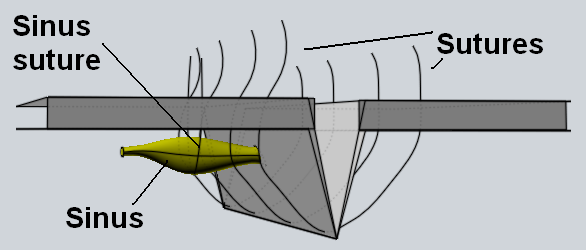Sometimes an abdominal incision does not heal and it gapes open. Usually there is some infection, which needs to be cleared by local dressing with/without systemic antibiotics. When healthy granulation tissue forms on the raw surface, the wound is sutured in one layer, using simple No.1 monofilament polyamide sutures.
We had a case who developed MRSA infection. We controlled it with antibiotics. Healthy granulation tissue formed. But there was a problem. A tunnel of about 1-2 cm length had formed under the skin surface extending from the right side of the wound laterally in the subcutaneous tissue. It just would not fill up, and we could not pack it because its opening was not big enough. If we sutured just the original incision, this sinus would persist and keep discharging pus chronically. The option of laying it open by cutting healthy tissue overlying it was not very attractive, because that was healthy tissue and we did not want to disfigure the abdomen. Then I had an idea, which I have shown in the following 3D representation.
Four simple interrupted sutures of No.1 monofilament polyamide are shown. When tied, they will approximate the edges of the wound. The sinus is seen on one side, with a suture passing under it and exiting on either side of it over the skin surface. When tied, it will occlude the cavity of the sinus. Then it will heal because the granulation tissue within it will generate fibrous tissue to replace the cavity. The patient responded to this form of treatment very well.
We had a case who developed MRSA infection. We controlled it with antibiotics. Healthy granulation tissue formed. But there was a problem. A tunnel of about 1-2 cm length had formed under the skin surface extending from the right side of the wound laterally in the subcutaneous tissue. It just would not fill up, and we could not pack it because its opening was not big enough. If we sutured just the original incision, this sinus would persist and keep discharging pus chronically. The option of laying it open by cutting healthy tissue overlying it was not very attractive, because that was healthy tissue and we did not want to disfigure the abdomen. Then I had an idea, which I have shown in the following 3D representation.
Four simple interrupted sutures of No.1 monofilament polyamide are shown. When tied, they will approximate the edges of the wound. The sinus is seen on one side, with a suture passing under it and exiting on either side of it over the skin surface. When tied, it will occlude the cavity of the sinus. Then it will heal because the granulation tissue within it will generate fibrous tissue to replace the cavity. The patient responded to this form of treatment very well.
